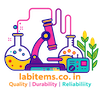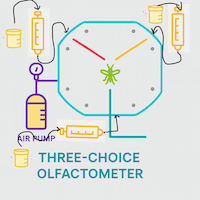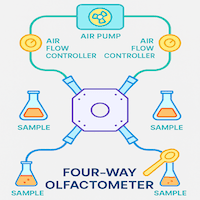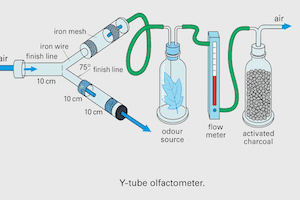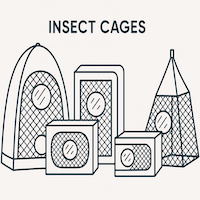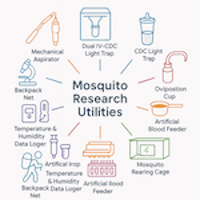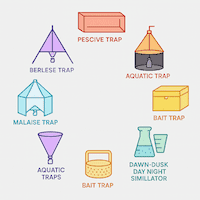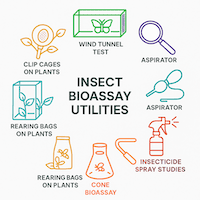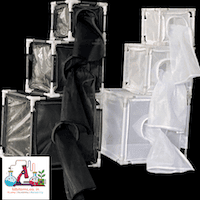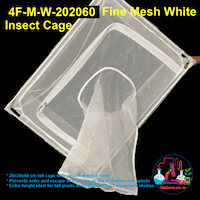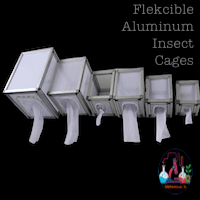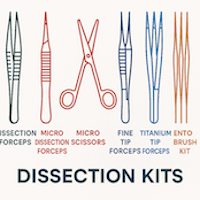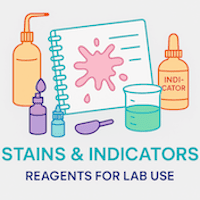
Streptomycin Sulphate 5gm
Customize
Streptomycin sulfate is an antibiotic often included in artificial diets for insects, particularly for rearing purposes.
Purpose in Insect Diets:
- Antibacterial Control: The primary function of streptomycin sulfate in insect diets is to suppress the growth of harmful bacteria. Insect artificial diets are often moist and can be susceptible to bacterial contamination, which can negatively impact insect health and survival rates. Streptomycin helps control these bacterial populations. Which in turn helps in successful establishment of insect colonies
Benefits:
- Improved Insect Survival: By reducing bacterial contamination, streptomycin sulfate can contribute to increased insect survival rates during rearing. This is crucial for research purposes and applications where high insect numbers are needed. The increased insect survival also helps in lowering the cost of culturing insects
- Extended Diet Shelf Life: Suppressing bacterial growth can also extend the shelf life of the artificial diet itself. This reduces waste and allows for better preparation and storage of insect food. Try to keep the artificial diet in refridgerator with 6-8 degrees no lower than that.
Things to Consider:
- Antibiotic Resistance: Overuse of antibiotics, including streptomycin sulfate, can contribute to the development of antibiotic resistance in bacteria. This is a growing concern, and researchers need to be mindful of responsible usage in insect diets.
- Alternatives: Some researchers are exploring alternative methods for controlling bacterial growth in insect diets, such as organic acids or antifungal agents (please refer below). These can be viable options depending on the specific insect and rearing goals.
Organic Acids:
Formic Acid: This is a naturally occurring acid found in some fruits and insects themselves. It has a broad spectrum of antimicrobial activity against bacteria and fungi [1]. However, formic acid can be irritating and requires careful handling.
Reference: Chougule, N. N., & Juvekar, A. R. (2016). Effect of different preservatives on the growth and development of the red flour beetle, Tribolium castaneum (Herbst) (Coleoptera: Tenebrionidae). Journal of Stored Products Research, 69, 142-147. [1]
Acetic Acid (Vinegar): This is a mild organic acid with some antifungal properties. It's a popular choice due to its low cost and relative safety compared to some other options [2].
Reference: Santos, C. D., Ramos, S. I., & Terra, W. R. (2011). Suitability of different diets for rearing Spodoptera frugiperda (Lepidoptera: Noctuidae). Florida Entomologist, 94(1), 222-228. [2]
Propionic Acid: This acid is more potent than acetic acid against bacteria and fungi. However, it can also have a stronger inhibitory effect on some insect development, so the concentration needs to be carefully balanced [3].
Reference: Beckel, W. E., Batista, R. C., Machado, R. L. P., Tanaka, M. M. C., & Pereira, T. J. S. (2013).Development of a low-cost meridic diet for Apis mellifera L. (Hymenoptera: Apidae) queens. Journal of Insect Science, 13(1), 16. [3]
Antifungal Agents:
Sorbic Acid and its Salts (Potassium Sorbate, Sodium Sorbate): These are widely used antifungal preservatives with minimal impact on insect development. They work by disrupting fungal cell membranes [4].
Reference: Dang, L. X., & Cooper, D. V. (2006). Evaluation of antifungal effects of chemicals on growth and development of the red flour beetle (Tribolium castaneum) on wheat. Journal of Stored Products Research, 42(4),464-474. [4]
Benzoic Acid and its Salts (Sodium Benzoate, Potassium Benzoate): Similar to sorbic acid, these are effective antifungal agents with a good safety profile for insects [5].
Reference: Isman, M. B., & Vaughn, J. L. (1988). Inhibition of insect fungal symbionts by extracts of Melaleuca alternifolia. Journal of Applied Entomology, 106(1-5), 157-163. [5]
Additional Considerations:
- The choice of organic acid or antifungal agent will depend on the specific insect species being reared and the target microbes to be controlled.
- The concentration used is crucial. Too high a concentration can harm the insects, while too low may not be effective against microbial growth.
- Some research explores combining organic acids and antifungal agents for a broader spectrum of control.
